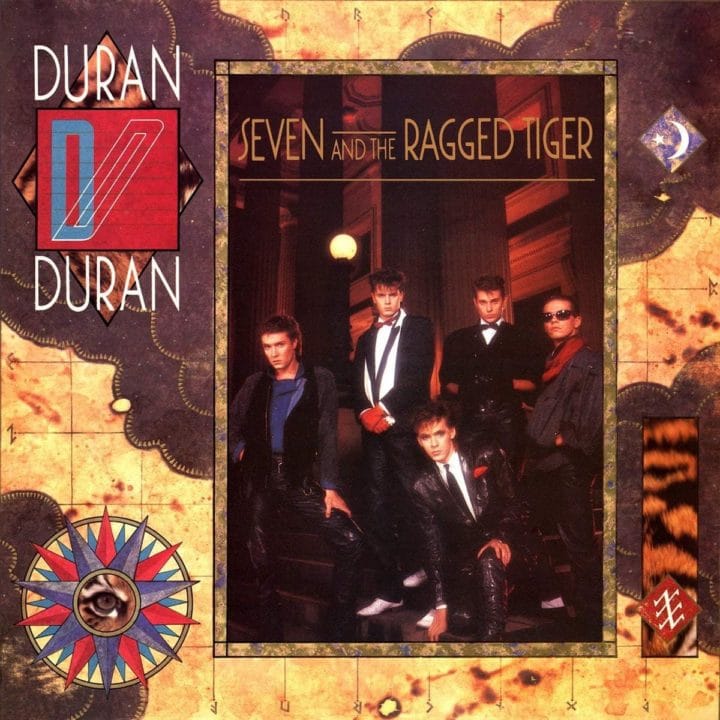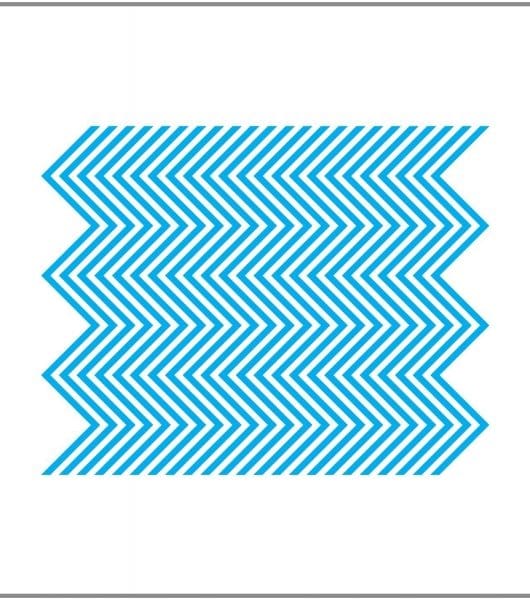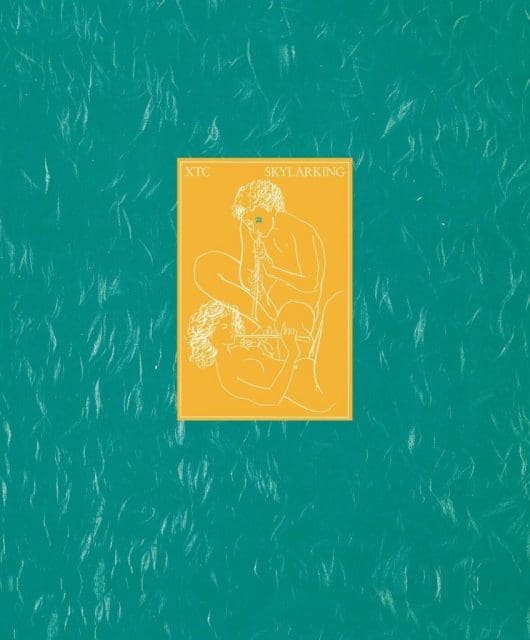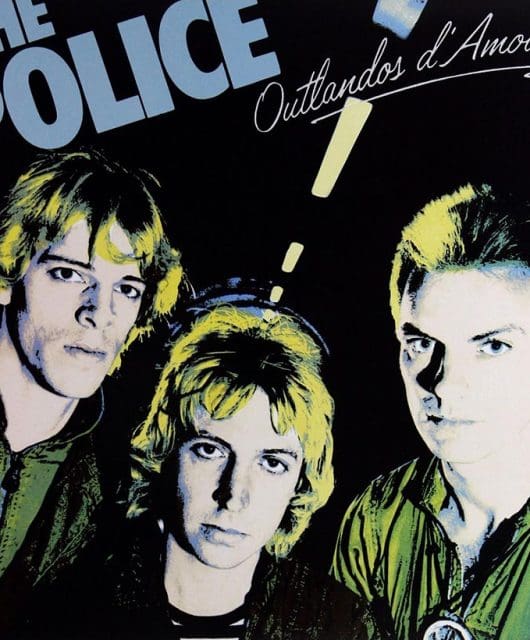Making Duran Duran: Seven And The Ragged Tiger
By Classic Pop | June 28, 2021
After sailing their way to superstardom with rio, Duran Duran’s Seven And The Ragged Tiger saw them threatened with becoming victims of their own success. In danger of being overexposed, they saved their reputations – and their money – by spending the year abroad… By Mark Lindores
 After a whirlwind two years which had seen them release two albums, tour the world twice, become video age posterboys and spark scenes of fan hysteria, Duran Duran were firmly established as one of the biggest bands in the world.
After a whirlwind two years which had seen them release two albums, tour the world twice, become video age posterboys and spark scenes of fan hysteria, Duran Duran were firmly established as one of the biggest bands in the world.
However, as Duranmania reached its zenith, the group was perilously close to implosion due to constant scrutiny into their personal lives – be it from the press or the ardent acolytes that followed their every move with militant accuracy.
As the band began work on its third album early Seven And The Ragged Tiger in 1983, the decision was made to write and record abroad to avoid a burgeoning backlash and a hefty tax bill.
“It’s an adventure story about a little commando team,” Simon told Rolling Stone. “The Seven is for us – the five band members and the two managers – and the Ragged Tiger is success. Seven people running after success. It’s ambition – that’s what it’s about.”
As many of the songs from the first two albums had been written around the same time and recorded close together with the same producer, Duran Duran and Paul and Michael Berrow agreed a change of sound would be beneficial to illustrate both their musical progression and the story of their success.
“We decided on a change production-wise because we wanted a different sound,” Nick Rhodes says. “Instead of Colin Thurston, we worked with Ian Little, who had worked on Is There Something I Should Know? and Alex Sadkin, who had done great stuff with Grace Jones, the Thompson Twins and Bob Marley.
The combination worked extremely well for us. Alex worked really well with rhythm, which was something we hadn’t exploited to its full potential within the band before. At that point, it was definitely the most rhythmic thing we’d done.”
Escaping to a three-storey chateau outside Cannes in the south of France, the band, along with Little, set up a writing camp, taking a 24-track mobile studio from London’s RAK studios and beginning writing and recording lengthy jam sessions before listening to them back, cherry-picking segments and ideas and using them as a foundation on which to build new songs.
Little had learnt the technique while working on Roxy Music’s Avalon, and he deployed it to great effect on Duran Duran’s music.
Read our feature on Duran Duran’s cover art
Read John Taylor’s interview with Duran Duran guitarist Dom Brown
“That was the first time we’d done anything like that,” Nick says. ”The songs were built rather than written. On Union Of The Snake, I started off putting down a pattern all the way through, then another pattern, and then a third.
“Then as I played them back I could press a button and punch in and out, switching between the three patterns at different points, and that resulted in a very interesting arrangement. Then Simon could see where he wanted to put the vocal parts, where the bridges and the choruses should go.”
After three months of demo work in Cannes, the band moved to Montserrat’s AIR Studios for six weeks, where Alex Sadkin took over main production duties on Seven And The Ragged Tiger. “EMI was getting nervous about me and the band co-producing the album, and to be honest I was a little bit out of my depth, so the decision was taken
to use Alex,” Little recalls.
“I was devastated. I went to the band’s management and said ‘You can’t do this to me. I’ll be finished,’ and they said ‘We’re sorry, but this is a big project and we can’t risk it, so you’re out.’ The band members all appeared to want me involved, but they weren’t prepared to stand up to their managers or to EMI, so I went to Alex and he said ‘From what I can see you’re like a sixth member of this band. I won’t do it without you.’
“He needn’t have done that – from a financial standpoint he would have been better off if I wasn’t involved, but that shows what kind of person he was; an absolute gentleman [Alex died in a car crash in 1987]. But he also wasn’t an idiot, and this signalled a recognition on his part that I was an integral part of Duran Duran’s work process at that time. I didn’t get writing credits and I don’t believe I deserved them, but I know I helped come up with ideas during that time.”
Read our feature on Duran Duran’s 1990 album Liberty
Read more: Duran Duran Superfan
Now that the band was favouring a more dance-oriented direction, Duran Duran saw the album as an opportunity to take risks and evolve from their Rio sound. Is There Something I Should Know? became a blueprint for the sound of the record, along with recent favourites such as David Bowie’s Let’s Dance (which influenced Union Of The Snake in particular).
As the album was nearing completion in Montserrat, recording was interrupted after Nick Rhodes fell ill and was airlifted to hospital suffering from complications due to an irregularly fast heartbeat.
The band also flew back to the UK to perform two charity concerts – one in Birmingham’s Villa Park in aid of MENCAP, and a Prince’s Trust Benefit Concert on special request from their fan Princess Diana.
After the gigs, the third phase of album sessions took them to Sydney, Australia, where they spent the rest of 1983 finishing the album and kicking off their next tour. The first single, Union Of The Snake, preceded Seven And The Ragged Tiger by a month in October 1983.
It was a Top 10 hit, yet this performance was a letdown (likewise with second single New Moon On Monday). With the album receiving poor reviews, and their inability to promote it as much as they would have liked to due to commitments in Australia, the boys were relieved when the album went to No.1 in the UK.
For the third single, the group decided to remix The Reflex. As huge Chic fans, they were thrilled when Nile Rodgers agreed to rework the song. His use of samplers and mixers proved invaluable, giving Duran Duran their biggest hit to date.
“We didn’t really nail it on the album… we were, like, ‘There’s a hit song in there somewhere,’ but we didn’t get it,” John recalls. “When Seven And The Ragged Tiger came out, it was a little underwhelming that there was no obvious follow-up to Hungry Like The Wolf or Save A Prayer but we sent the song to Nile and said, ‘Could you do anything with this?’
“And then he turned it into something extraordinary, with all the ‘fleck, fleck, flecks’ and the ‘why-yi-yi’ and all the magical things that he applied to the original recording. Then we did something wacky with the live video and… yeah, we were still in the game. Back in the game again!”
For more info on Duran Duran check out their official website here






